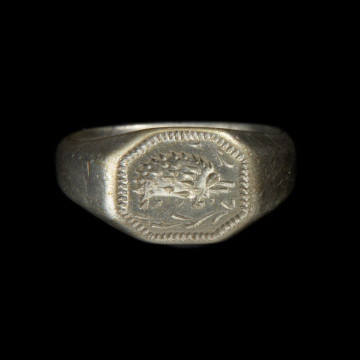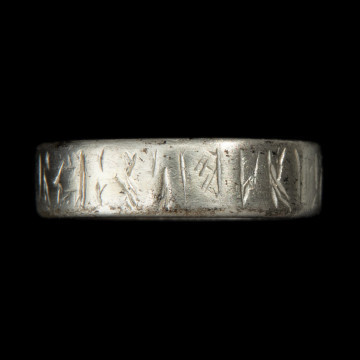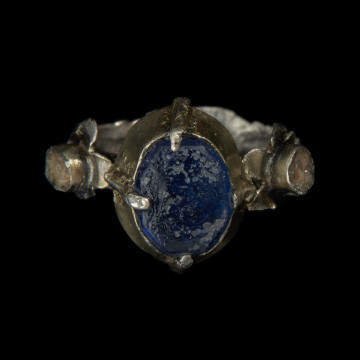
Signet ring with hedgehog
przełom XIV i XV wieku
National Museum in Szczecin
Part of the collection: Jewels and costumes of Pomeranian dukes
Signets were used as personal seals to mark sealed correspondence or documents. They were usually worn on the right hand, on the index or little finger. In Francis I’s post mortem portrait in the collection of the Merseburg Cathedral, the signet ring can be seen on the little finger of his right hand. The tiny seal piston was made with great precision. It features the nine-pointed coat of arms of the Duchy of Pomerania, the ducal crown above it, and a majuscule inscription: V.G G. FRANCISCUS [...] STETTIN POM. [VON GOTTES GNADEN] FRANCISCUS [HERZOG?] STETTIN [POMMERN] [By God's Grace, Francis [Duke?] of Szczecin-Pomerania] all around it. It is not known whether the signet was created when the Duke took power in Szczecin in 1618 or whether it may have been made earlier, as all the Griffins co-ruling the Pomeranian Duchy had the right to use the title of the Duke of Szczecin Pomerania.A representative image of Francis I from the collection of Stiftung Preußische Schlösser und Gärten Berlin-Brandenburg, painted around 1610, shows another of his signets, namely, a large octagonal one, worn by the Duke on the thumb of his right hand. One more signet, formerly belonging to the Griffins, made for Bogislaw XIV, with the Pomeranian coat of arms and the initials BHZ / SP cut in sapphire, has survived to our times (in the collection of the University of Greifswald, in the deposit of the Pommersches Landesmuseum).
Monika Frankowska-Makała
Author / creator
Dimensions
cały obiekt: height: 2,1 cm, width: 2,1 cm
Object type
ring (jewellery), jewellery
Creation time / dating
Creation / finding place
Identification number
Location / status

przełom XIV i XV wieku
National Museum in Szczecin

przełom XIV i XV wieku
National Museum in Szczecin

National Museum in Szczecin
DISCOVER this TOPIC
National Museum in Szczecin
DISCOVER this PATH
Educational path